Speaker
Description
The data analysis of the results of proton-proton collisions performed at the CERN LHC is currently heavily relying on classical machine learning algorithms for optimal separation between signal and backgrounds. The training of these discriminants, that in the vast majority of the cases are either boosted decision trees or deep neural networks, relies of large samples of simulated events, while the discriminants architecture is usually based on empirical trial-and-error-based techniques to choose the algorithm hyperparameters.
The aim of this project is to perform a fully blown comparative study between classical and quantum machine learning (QML) in the proton collisions case, in order to quantify the differences in performances between the two techniques. In fact, the elementary particle interaction is an ideal environment due to the relatively limited number of features that characterise the physics events, the highest degree of reproducibility of the initial conditions, the availability of simulations linked to theory calculations with high precision and quantitative estimates of their availability, the extreme quality of the simulated events.
The study will focus on the electroweak production of vector boson pairs, which is of fundamental importance for the understanding of the electroweak symmetry breaking (EWSB), which is the theoretical corner stone of the standard model of particle physics. This kind of interaction is characterised by an unfavourable signal-over-background ratio and yet a very distinct signature, due to the presence of six fermions in the final state, which have distinct kinematical and topological behaviours dictated by the theoretical properties of the events.
We will test the performances of classical and quantum machine learning in several different conditions, with fully comparable benchmark scenarios and figures of merit. Studies will be performed as a function of the initial conditions, as for example the number of available training simulated events; as a function of the classical and quantum model design and hyperparameters; with different theoretical precision in the signal and backgrounds calculation, with respect to the full interaction description. When possible, we will confront the results to real LHC data, either in agreement with the experimental Collaborations, or making use of Open Data.
Thanks to the deep theoretical understanding of the process, we will build the QML model with a quantum circuit architecture adapted to the expected physical correlations among the model input features, to either verify whether the QML training would be able to single out expected entanglements, or check whether context-aware architectural choices may generate significative improvements in the circuit performances. In particular, we will investigate the advantages of such an approach in the isolation of the longitudinal component of the scattering, which is by far the most sensitive one to the EWSB physics.
The proponents are for the time being by Pietro Govoni and Andrea Giachero. Pietro Govoni is Associate Professor at Milano - Bicocca University and works in the field of experimental particle physics: he is member of the CMS Collaboration, where he works in the study of standard model processes, in particular on vector boson scattering. He is currently one of the CMS SMP Physics Analysis Group conveners and he lead the COST Action CA16108 named VBSCan and dedicated to the study of vector boson scattering at hadron colliders.
Andrea Giachero is Assistant Professor at Milano - Bicocca University and works in the fields of experimental particle physics and quantum technologies. He is the Principal Investigator of the DARTWARS project (https://dartwars.unimib.it/) and member of the HOLMES and CUORE collaborations. Starting from October 2021 is a Marie Skłodowska-Curie IF Researcher. He leads the Quantum Information Science - Milano Bicocca University (QISMIB) program (https://github.com/qismib) that aims to introduce students to quantum computing.
We would like to collaborate with the CERN Quantum Computing group to create a stronger team, and propose a thesis for a brilliant master student to be the main player of the project. The tools needed for the project to start are well established in the fields of QML and high-energy physics, therefore the project may start very quickly. The student would be selected based on excellence in the academic history and prior knowledge of quantum computing and particle physics, so to become operative in a short time, with a limited needed preliminary training. The duration of the project is expected to be less than a year.
The final results will show a systematic quantitative comparison between classical and quantum machine learning with respect to the various possible architectures and initial conditions, investigating the new interesting avenue of context-aware QML training.
| CERN group or section submitting a project proposal | PH |
|---|




